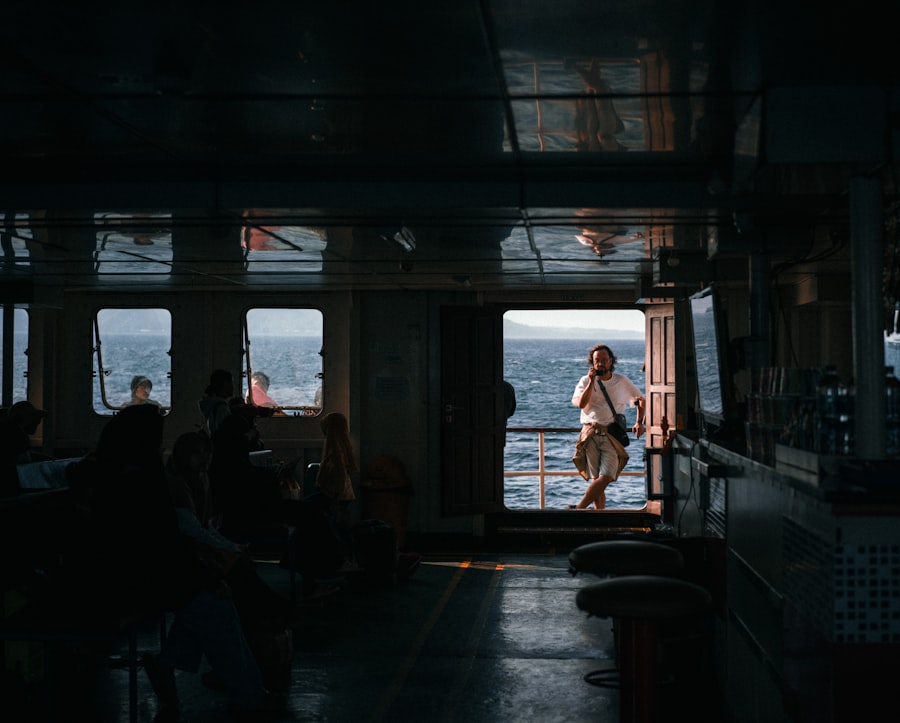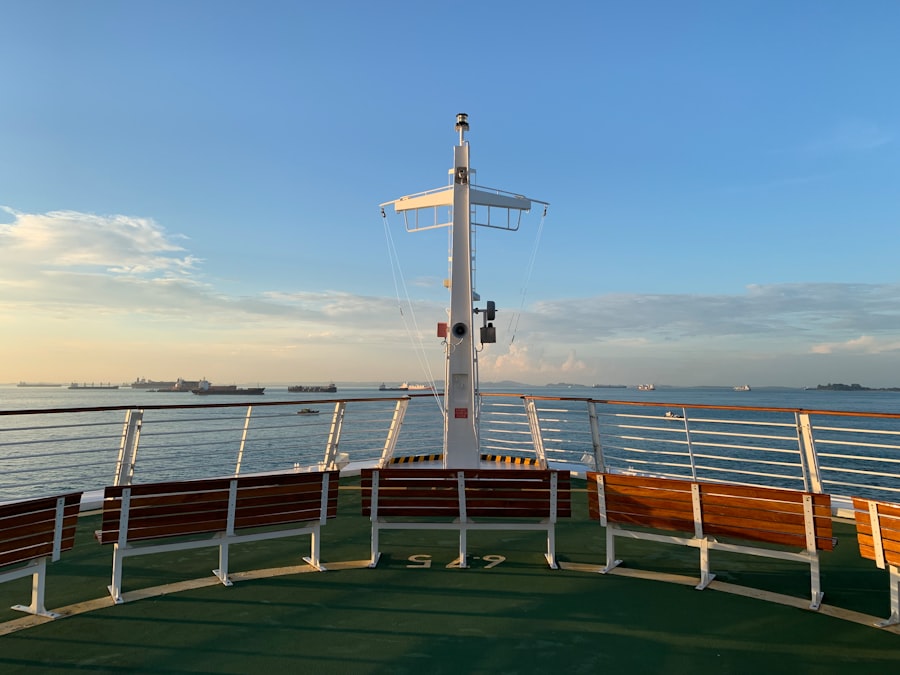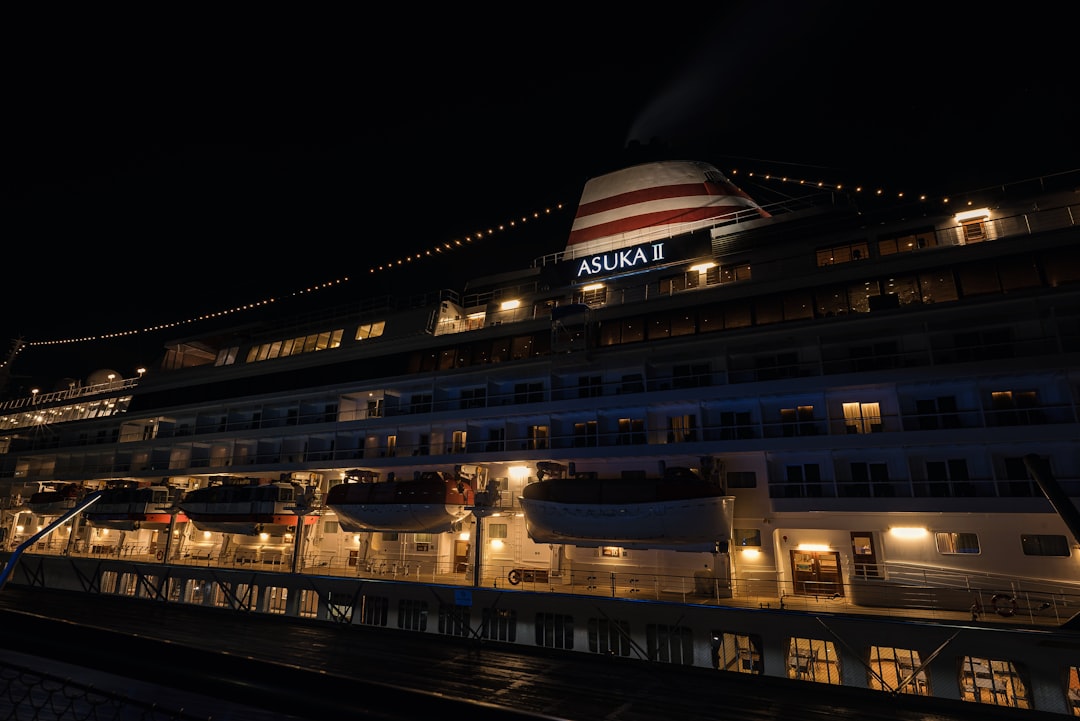The Drake Passage, a body of water that separates South America from Antarctica, is renowned for its tumultuous seas and breathtaking vistas. Named after the English explorer Sir Francis Drake, this passage is often considered one of the most challenging maritime routes in the world. Stretching approximately 600 kilometers (370 miles) between Cape Horn and the Antarctic Peninsula, it serves as a vital conduit for vessels venturing to the icy realms of Antarctica.
The passage is not only a geographical marvel but also a significant ecological zone, teeming with diverse marine life and serving as a critical habitat for various species. Navigating the Drake Passage is an adventure in itself, often characterized by unpredictable weather and rough seas. For many travelers, crossing this notorious stretch of water is a rite of passage, marking the beginning of their Antarctic expedition.
The experience can be both exhilarating and daunting, as the waves can rise dramatically, creating a sense of awe and respect for the power of nature. Despite its reputation, the Drake Passage offers an unparalleled opportunity to witness the raw beauty of the Southern Ocean and the unique wildlife that inhabits these frigid waters.
Key Takeaways
- The Drake Passage is a notoriously rough body of water between South America’s Cape Horn and the South Shetland Islands of Antarctica.
- When preparing for a journey through the Drake Passage, pack warm clothing, seasickness medication, and expect rough seas and potentially challenging sailing conditions.
- Departing from Ushuaia, Argentina, the gateway to Antarctica, marks the beginning of an exciting and adventurous journey through the Drake Passage.
- Crossing the Drake Passage can take 2-4 days, during which passengers can expect to experience the open ocean, wildlife sightings, and educational lectures on board.
- Arriving at the South Shetland Islands on day 5 marks the first glimpse of the Antarctic landscape and the beginning of exploration in this unique and remote region.
Preparing for the Journey: What to Pack and Expect
Preparation is key when embarking on a journey across the Drake Passage. Travelers should begin by considering the climate and conditions they will encounter. The weather in this region can be highly variable, with temperatures ranging from mild to frigid, depending on the season.
Additionally, sturdy footwear is crucial for navigating wet decks and icy terrain upon arrival in Antarctica. Beyond clothing, travelers should also consider personal items that will enhance their experience.
Binoculars are invaluable for wildlife watching, allowing passengers to spot distant seals or whales from the ship. A good camera with a zoom lens is also recommended to capture the stunning landscapes and unique wildlife encounters. Furthermore, seasickness medication may be wise to have on hand, as the Drake Passage is notorious for its rough waters.
By preparing adequately, travelers can focus on enjoying their adventure rather than worrying about discomfort.
Day 1: Departure from Ushuaia, Argentina

The journey begins in Ushuaia, Argentina, often referred to as the southernmost city in the world. As travelers gather at the port, excitement fills the air. The vibrant atmosphere of Ushuaia, with its colorful buildings and stunning backdrop of mountains and sea, sets the stage for an unforgettable adventure.
Passengers embark on their vessel, greeted by friendly crew members who provide an overview of safety protocols and what to expect during the journey. As the ship departs from Ushuaia, passengers are treated to breathtaking views of the Beagle Channel. The landscape is dotted with islands and rugged coastlines, creating a picturesque setting that captivates everyone on board.
As they sail further into open waters, travelers can feel the anticipation building for what lies ahead. The first day is filled with exploration of the ship’s amenities and mingling with fellow adventurers, all eager to share their excitement about crossing the Drake Passage.
Days 2-4: Crossing the Drake Passage
| Metrics | Day 2 | Day 3 | Day 4 |
|---|---|---|---|
| Distance Covered (nautical miles) | 250 | 300 | 275 |
| Sea Conditions | Moderate | Rough | Rough |
| Weather | Partly Cloudy | Overcast | Overcast |
| Wildlife Sightings | 3 whales | 5 albatross | 2 seals |
The next few days are dedicated to crossing the Drake Passage, an experience that can be both thrilling and challenging. As the ship ventures into open waters, passengers quickly learn why this passage has earned its reputation. The waves can swell dramatically, creating a rollercoaster-like experience that tests even seasoned sailors.
However, amidst the turbulence lies an opportunity for adventure; many travelers find themselves captivated by the sheer power of nature surrounding them. During this time at sea, passengers are encouraged to participate in various onboard activities designed to enhance their understanding of Antarctica’s unique ecosystem. Lectures led by expert naturalists provide insights into the region’s wildlife and geography, while workshops on photography help travelers capture stunning images of their journey.
Evenings are often spent sharing stories over dinner or enjoying a drink at the ship’s bar while watching the sunset over the horizon—a moment that serves as a reminder of the beauty that lies ahead.
Day 5: Arriving at the South Shetland Islands
After days of navigating through turbulent waters, Day 5 marks a significant milestone as travelers approach the South Shetland Islands.
As the ship draws closer to land, passengers can feel a palpable sense of excitement in the air; they are about to set foot on one of the most remote places on Earth.
Upon arrival, travelers are greeted by stunning vistas of snow-capped mountains and glistening glaciers. The South Shetland Islands are home to various wildlife species, including penguins and seals, making it an ideal location for exploration. Guided excursions allow passengers to disembark onto these pristine shores, where they can witness wildlife in its natural habitat.
The thrill of seeing penguins waddling along the beach or seals basking in the sun creates unforgettable memories that will last a lifetime.
Days 6-8: Exploring the Antarctic Peninsula

Days 6 through 8 are dedicated to exploring the Antarctic Peninsula, a region renowned for its breathtaking landscapes and diverse wildlife. As travelers venture deeper into this icy wonderland, they are met with towering icebergs and expansive glaciers that seem to stretch endlessly into the horizon. Each day brings new opportunities for adventure—whether it’s kayaking through icy waters or embarking on guided hikes across rugged terrain.
Wildlife encounters abound during this time; passengers may find themselves surrounded by colonies of Adelie or Gentoo penguins as they waddle about their nests. The sight of whales breaching in nearby waters adds an element of excitement to each excursion. Naturalists onboard share their knowledge about these incredible creatures, enhancing travelers’ appreciation for this fragile ecosystem.
Each moment spent in this pristine environment serves as a reminder of nature’s beauty and resilience.
Day 9: Sailing through the Drake Passage
As the journey nears its conclusion, Day 9 involves sailing back through the Drake Passage. This return trip offers a different perspective on the waters that once seemed so daunting. With memories of breathtaking landscapes and wildlife encounters fresh in their minds, passengers reflect on their experiences while navigating familiar waters once again.
The return journey can also provide opportunities for additional wildlife sightings; seabirds often accompany ships crossing these waters, creating a lively atmosphere onboard. Passengers may engage in discussions about their favorite moments from the trip or participate in final lectures that summarize their experiences in Antarctica. As they sail toward Ushuaia, there is a sense of camaraderie among travelers who have shared this extraordinary adventure together.
Day 10: Return to Ushuaia
On Day 10, travelers arrive back in Ushuaia, marking the end of their remarkable journey across the Drake Passage and into Antarctica. As they disembark from the ship, there is a mix of emotions—joy from having experienced such an incredible adventure and sadness at leaving behind this pristine wilderness. Many passengers take one last look at their vessel before stepping onto solid ground once more.
Ushuaia welcomes them back with its vibrant charm and stunning scenery. Travelers often take time to explore this unique city before heading home; local shops offer souvenirs that serve as reminders of their journey while restaurants provide opportunities to savor regional cuisine. Reflecting on their experiences during this trip allows them to appreciate not only what they have seen but also how it has changed them.
Wildlife Encounters: Penguins, Whales, and Seals
One of the most captivating aspects of any journey through the Drake Passage and into Antarctica is undoubtedly its wildlife encounters. The region is home to an array of species that thrive in its cold waters and icy landscapes. Penguins are perhaps the most iconic inhabitants; travelers often find themselves enchanted by these charming birds as they waddle across snow-covered terrain or dive gracefully into frigid waters.
Whales also play a significant role in this ecosystem; species such as humpbacks and orcas can often be spotted breaching or swimming alongside vessels during excursions. The thrill of witnessing these majestic creatures in their natural habitat creates lasting memories for all who embark on this journey. Seals add another layer of excitement; whether lounging on ice floes or playfully swimming nearby, these marine mammals contribute to the rich tapestry of life found in this remote region.
Onboard Activities and Amenities
While much of the adventure takes place off-ship during excursions into Antarctica, onboard activities and amenities play an essential role in enhancing travelers’ experiences throughout their journey across the Drake Passage. Modern vessels are equipped with comfortable cabins that provide a cozy retreat after long days spent exploring icy landscapes. Onboard lectures led by expert naturalists offer valuable insights into Antarctica’s unique ecosystem while enriching passengers’ understanding of what they encounter during excursions ashore.
Additionally, many ships feature observation lounges where travelers can relax with panoramic views of passing icebergs or seabirds soaring overhead—perfect spots for capturing stunning photographs or simply soaking in nature’s beauty.
Tips for Making the Most of Your Drake Passage Cruise Adventure
To fully embrace all that a cruise through the Drake Passage has to offer, travelers should keep several tips in mind before embarking on their adventure. First and foremost is flexibility; weather conditions can change rapidly in this region, so being adaptable will enhance one’s experience significantly. Embracing spontaneity allows travelers to seize unexpected opportunities for exploration or wildlife sightings.
Engaging with fellow passengers can also enrich one’s journey; sharing stories and experiences fosters connections that often last long after returning home. Finally, taking time each day to reflect on personal experiences—whether through journaling or photography—can deepen appreciation for this extraordinary adventure across one of Earth’s last frontiers. In conclusion, crossing the Drake Passage is not merely a means to reach Antarctica; it is an adventure filled with challenges and rewards that create lasting memories for all who embark on this remarkable journey.
From preparing for departure in Ushuaia to exploring breathtaking landscapes teeming with wildlife, each moment spent navigating these waters offers unique insights into one of our planet’s most awe-inspiring regions.
If you’re planning a journey through the Drake Passage, you might be curious about the duration of such a cruise. Typically, a Drake Passage cruise can last anywhere from two to four days, depending on weather conditions and the specific itinerary of the voyage. For more detailed information on what to expect during this adventurous journey, you can check out a related article on the topic by visiting this page. This resource provides insights into the challenges and experiences of navigating one of the most notorious stretches of water in the world.
WATCH NOW! Drake Passage: Earth’s Deadliest Waters Revealed
FAQs
What is the Drake Passage?
The Drake Passage is the body of water between the southern tip of South America and the northern tip of the Antarctic Peninsula. It is known for its rough seas and challenging sailing conditions.
How long does a Drake Passage cruise typically last?
A typical Drake Passage cruise can last anywhere from 2 to 3 days, depending on the specific itinerary and weather conditions.
What can I expect to see during a Drake Passage cruise?
During a Drake Passage cruise, passengers can expect to see a variety of wildlife, including seabirds, whales, and possibly even penguins. The dramatic scenery of the Antarctic Peninsula and surrounding islands is also a highlight of the journey.
What are the weather conditions like in the Drake Passage?
The weather in the Drake Passage can be unpredictable and is known for its strong winds and rough seas. Passengers should be prepared for potentially challenging sailing conditions.
What types of ships are used for Drake Passage cruises?
Drake Passage cruises are typically conducted on expedition ships specifically designed to navigate the challenging conditions of the passage. These ships are often smaller in size and equipped with stabilizers to minimize the impact of rough seas.
